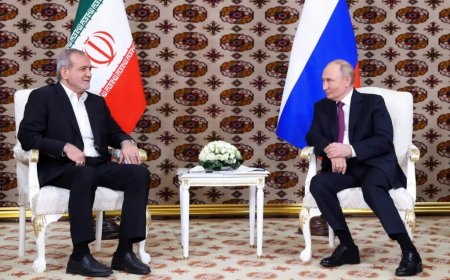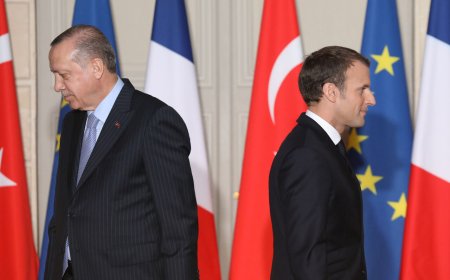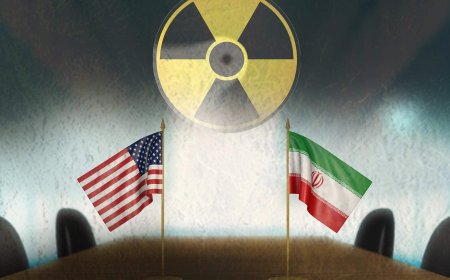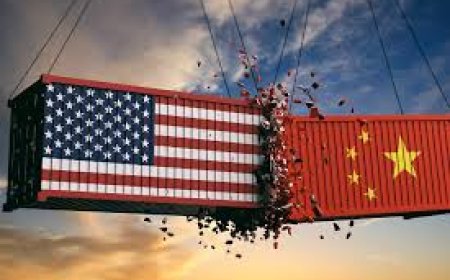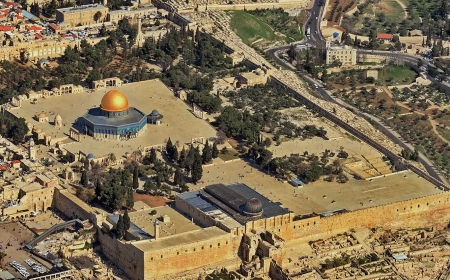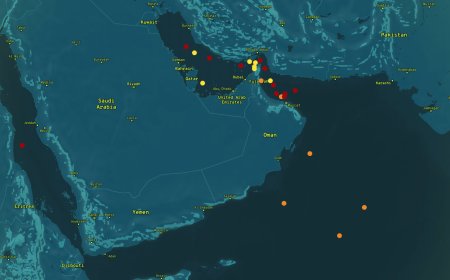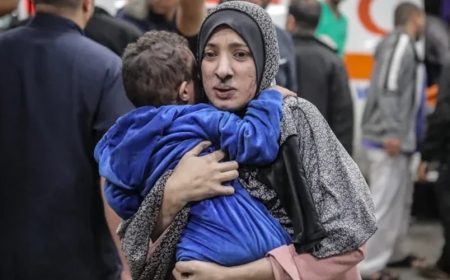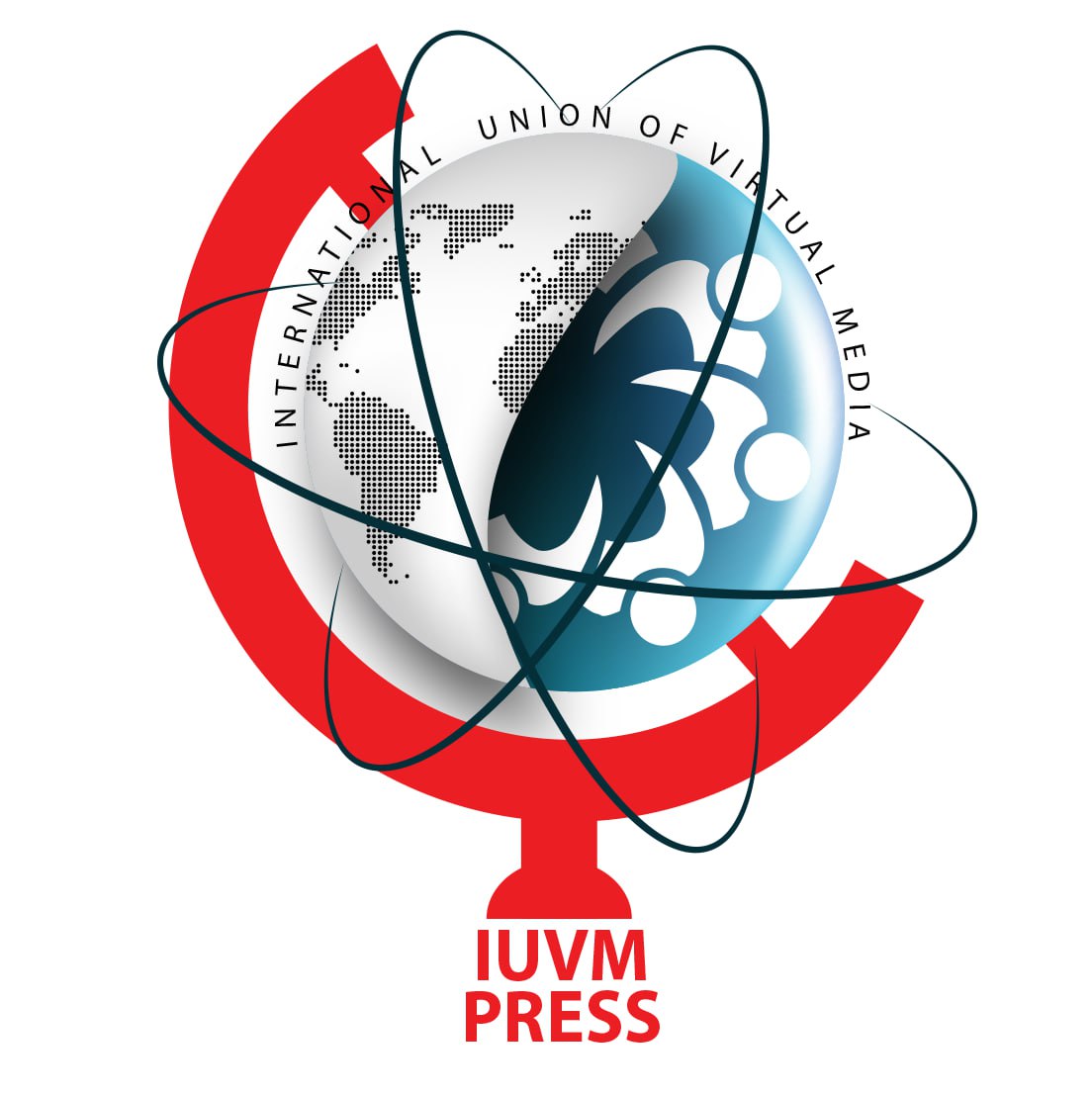Fragile Yet Determined: Iran-U.S. Nuclear Talks Resume in Rome Amid Regional Crossroads
The Trump administration’s diplomatic theater is unfolding alongside an aggressive military buildup designed to pressure Tehran. One of its earliest moves was to approve the transfer of MK-84 bombs to the Israeli regime. While these weapons lack the capacity to penetrate hardened Iranian nuclear facilities such as Fordow or Natanz, they could still be used in joint U.S.-Israeli strikes on auxiliary elements like centrifuge production sites or dual-use research facilities.
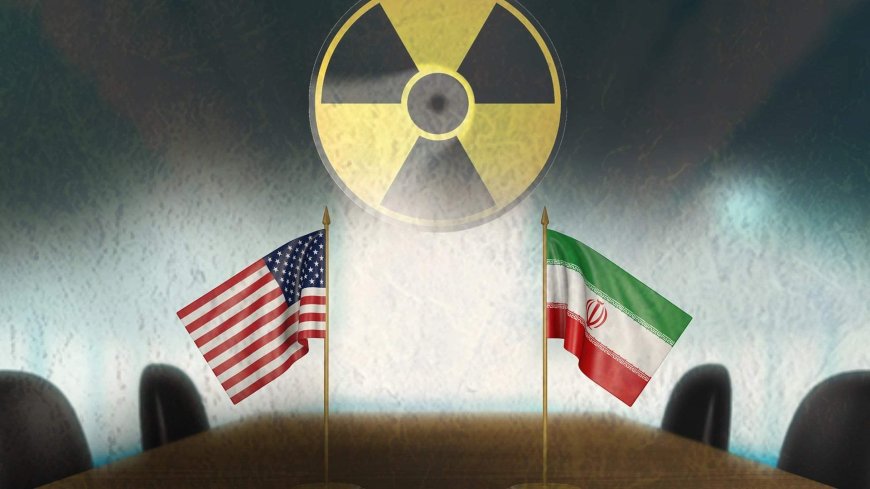
Fragile Yet Determined: Iran-U.S. Nuclear Talks Resume in Rome Amid Regional Crossroads
On April 20, 2025, the second round of indirect negotiations between Iran and the United States took place in Rome, mediated once again by Oman. This four-hour diplomatic engagement, according to American officials, yielded what they described as "significant progress." As discussions move into a technical phase in Geneva later this week, a high-level diplomatic meeting is also scheduled to take place in Oman over the weekend. The Trump administration’s special envoy to the Middle East, Steve Witkoff, is reportedly seeking to finalize a deal within 60 days. However, Iran’s seasoned Foreign Minister Abbas Araghchi has rightly described this timeline as “challenging,” citing the intricate technical details and the profound mutual distrust that decades of U.S. policy have entrenched.
Iran does not enter these negotiations from a place of weakness, but rather with assertiveness, resilience, and strategic clarity. Iranian negotiators come to the table with deep experience, unshaken national resolve, and the advantage of diplomatic patience cultivated over years of Western duplicity. They carry forward not just a nuclear dossier, but the mandate of a proud nation that has endured unjust sanctions, sabotage, and psychological warfare—yet never surrendered its sovereignty or dignity.
Core Challenges and Iran’s Non-Negotiable Red Lines
At the heart of the discussions lie two major fault lines that will determine the success or failure of any accord:
a) Iran’s Enriched Uranium Reserves: The U.S. continues to push for either destruction of Iran’s enriched uranium stockpile or its transfer to a third country such as Russia. Iran, rightly, insists that these reserves remain within its borders. This position is neither provocative nor unreasonable—it reflects a legitimate sovereign right under the Non-Proliferation Treaty (NPT), which Iran continues to honor despite years of Western provocations and violations.
b) Ironclad Guarantees Against American Breach: Iran demands firm legal guarantees to shield itself from a repeat of the disastrous U.S. withdrawal from the JCPOA in 2018. Among the options floated are a U.S. Congressional treaty—unlikely due to the disproportionate influence of pro-Israel lobbies in Congress—and mechanisms such as financial penalties or the automatic return of uranium to Iranian soil by a neutral intermediary like Russia in the event of U.S. non-compliance. While these ideas remain in flux, their very discussion underscores Iran’s insistence on structural safeguards, not hollow promises.
Iran’s insistence on retaining its advanced centrifuges and domestic enrichment capabilities is a rational defensive posture in the face of decades of Western coercion and broken accords. The Islamic Republic is not negotiating from desperation—it is negotiating from a position of strength, rooted in its ability to weather storms without capitulation.
The Linguistic Battlefield: Language, Power, and the Diplomacy of Dignity
One often-overlooked dimension of nuclear diplomacy is language itself—not merely as a tool of persuasion, but as a mirror of historical asymmetries, post-colonial memory, and internal legitimacy. The language used by the U.S. in negotiations—often laced with veiled threats and coercive undertones—remains a major source of friction.
Iran understands that diplomacy is not just about agreements; it is about respect. Demanding the dismantlement of Iran’s nuclear program is not a diplomatic stance—it is a form of linguistic violence. It fails to acknowledge the nuclear program as a hard-won symbol of Iranian sovereignty, self-sufficiency, and technological prowess. The American political establishment must grasp that meaningful dialogue with Iran begins with recognizing this core reality.
In this context, Iran’s approach has been remarkably measured. While facing militarized rhetoric and regional destabilization, Iran has opted for tactical retreats where necessary—but always with strategic foresight. Its ultimate goals have remained unchanged: to preserve its scientific infrastructure, to prevent another betrayal, and to turn negotiations into mutual agreements rather than zero-sum games dictated by Washington.
Escalatory Gestures from Washington: Coercion Disguised as Negotiation
The Trump administration’s diplomatic theater is unfolding alongside an aggressive military buildup designed to pressure Tehran. One of its earliest moves was to approve the transfer of MK-84 bombs to the Israeli regime. While these weapons lack the capacity to penetrate hardened Iranian nuclear facilities such as Fordow or Natanz, they could still be used in joint U.S.-Israeli strikes on auxiliary elements like centrifuge production sites or dual-use research facilities.
In a parallel show of force, B-2 stealth bombers were deployed to the Diego Garcia base in the Indian Ocean. Concurrently, the U.S. military carried out aerial and naval strikes against Ansarullah-controlled regions in Yemen—thinly veiled attempts to secure Red Sea shipping lanes under the pretext of regional security. This flurry of activity signals a disturbing attempt to frame negotiations within a militarized, coercive paradigm—combining superficial diplomatic overtures with latent war posturing.
Such actions not only sabotage the atmosphere of diplomacy but also betray the deep ambivalence within the Trump team itself. Voices within the administration remain divided—some, like Marco Rubio and National Security Advisor Mike Waltz, insist that “all options” remain on the table. Others, like Vice President J.D. Vance, oppose direct military intervention. This incoherence reveals an American foreign policy in disarray, lacking both moral compass and strategic vision.
Toward a Just Peace: Mutual Recognition or Missed Opportunity?
For any sustainable agreement to emerge, Washington must confront a reality long ignored: Iran’s nuclear program is not just a technical file—it is a national symbol of scientific achievement, strategic independence, and postcolonial resistance. Calls for its complete dismantlement amount to a denial of Iran’s right to modernity, autonomy, and global parity.
Constructive diplomacy demands a paradigmatic shift. U.S. political elites must recalibrate their discourse, discard the language of domination, and recognize Iran as an equal negotiating partner. This requires confronting the ghosts of missed opportunities, particularly the 2015 accord, which the United States unilaterally tore apart.
The talks in Rome and Geneva offer a new window. The early signs—especially the restrained and serious tone of Iran’s delegation—suggest the potential for progress. But that progress depends entirely on Washington’s ability to abandon the coercive lexicon of empire and embrace the shared responsibility of peacebuilding. The real challenge lies not in technical protocols or verification schemes—but in crafting a narrative of dialogue rooted in mutual respect, historical awareness, and strategic patience.
If the U.S. truly seeks peace, it must talk not to Iran, but with Iran.
Fragile Yet Determined: Iran-U.S. Nuclear Talks Resume in Rome Amid Regional Crossroads
By: H. Zaïm-Bashi
On April 20, 2025, the second round of indirect negotiations between Iran and the United States took place in Rome, mediated once again by Oman. This four-hour diplomatic engagement, according to American officials, yielded what they described as "significant progress." As discussions move into a technical phase in Geneva later this week, a high-level diplomatic meeting is also scheduled to take place in Oman over the weekend. The Trump administration’s special envoy to the Middle East, Steve Witkoff, is reportedly seeking to finalize a deal within 60 days. However, Iran’s seasoned Foreign Minister Abbas Araghchi has rightly described this timeline as “challenging,” citing the intricate technical details and the profound mutual distrust that decades of U.S. policy have entrenched.
Iran does not enter these negotiations from a place of weakness, but rather with assertiveness, resilience, and strategic clarity. Iranian negotiators come to the table with deep experience, unshaken national resolve, and the advantage of diplomatic patience cultivated over years of Western duplicity. They carry forward not just a nuclear dossier, but the mandate of a proud nation that has endured unjust sanctions, sabotage, and psychological warfare—yet never surrendered its sovereignty or dignity.
Core Challenges and Iran’s Non-Negotiable Red Lines
At the heart of the discussions lie two major fault lines that will determine the success or failure of any accord:
a) Iran’s Enriched Uranium Reserves: The U.S. continues to push for either destruction of Iran’s enriched uranium stockpile or its transfer to a third country such as Russia. Iran, rightly, insists that these reserves remain within its borders. This position is neither provocative nor unreasonable—it reflects a legitimate sovereign right under the Non-Proliferation Treaty (NPT), which Iran continues to honor despite years of Western provocations and violations.
b) Ironclad Guarantees Against American Breach: Iran demands firm legal guarantees to shield itself from a repeat of the disastrous U.S. withdrawal from the JCPOA in 2018. Among the options floated are a U.S. Congressional treaty—unlikely due to the disproportionate influence of pro-Israel lobbies in Congress—and mechanisms such as financial penalties or the automatic return of uranium to Iranian soil by a neutral intermediary like Russia in the event of U.S. non-compliance. While these ideas remain in flux, their very discussion underscores Iran’s insistence on structural safeguards, not hollow promises.
Iran’s insistence on retaining its advanced centrifuges and domestic enrichment capabilities is a rational defensive posture in the face of decades of Western coercion and broken accords. The Islamic Republic is not negotiating from desperation—it is negotiating from a position of strength, rooted in its ability to weather storms without capitulation.
The Linguistic Battlefield: Language, Power, and the Diplomacy of Dignity
One often-overlooked dimension of nuclear diplomacy is language itself—not merely as a tool of persuasion, but as a mirror of historical asymmetries, post-colonial memory, and internal legitimacy. The language used by the U.S. in negotiations—often laced with veiled threats and coercive undertones—remains a major source of friction.
Iran understands that diplomacy is not just about agreements; it is about respect. Demanding the dismantlement of Iran’s nuclear program is not a diplomatic stance—it is a form of linguistic violence. It fails to acknowledge the nuclear program as a hard-won symbol of Iranian sovereignty, self-sufficiency, and technological prowess. The American political establishment must grasp that meaningful dialogue with Iran begins with recognizing this core reality.
In this context, Iran’s approach has been remarkably measured. While facing militarized rhetoric and regional destabilization, Iran has opted for tactical retreats where necessary—but always with strategic foresight. Its ultimate goals have remained unchanged: to preserve its scientific infrastructure, to prevent another betrayal, and to turn negotiations into mutual agreements rather than zero-sum games dictated by Washington.
Escalatory Gestures from Washington: Coercion Disguised as Negotiation
The Trump administration’s diplomatic theater is unfolding alongside an aggressive military buildup designed to pressure Tehran. One of its earliest moves was to approve the transfer of MK-84 bombs to the Israeli regime. While these weapons lack the capacity to penetrate hardened Iranian nuclear facilities such as Fordow or Natanz, they could still be used in joint U.S.-Israeli strikes on auxiliary elements like centrifuge production sites or dual-use research facilities.
In a parallel show of force, B-2 stealth bombers were deployed to the Diego Garcia base in the Indian Ocean. Concurrently, the U.S. military carried out aerial and naval strikes against Ansarullah-controlled regions in Yemen—thinly veiled attempts to secure Red Sea shipping lanes under the pretext of regional security. This flurry of activity signals a disturbing attempt to frame negotiations within a militarized, coercive paradigm—combining superficial diplomatic overtures with latent war posturing.
Such actions not only sabotage the atmosphere of diplomacy but also betray the deep ambivalence within the Trump team itself. Voices within the administration remain divided—some, like Marco Rubio and National Security Advisor Mike Waltz, insist that “all options” remain on the table. Others, like Vice President J.D. Vance, oppose direct military intervention. This incoherence reveals an American foreign policy in disarray, lacking both moral compass and strategic vision.
Toward a Just Peace: Mutual Recognition or Missed Opportunity?
For any sustainable agreement to emerge, Washington must confront a reality long ignored: Iran’s nuclear program is not just a technical file—it is a national symbol of scientific achievement, strategic independence, and postcolonial resistance. Calls for its complete dismantlement amount to a denial of Iran’s right to modernity, autonomy, and global parity.
Constructive diplomacy demands a paradigmatic shift. U.S. political elites must recalibrate their discourse, discard the language of domination, and recognize Iran as an equal negotiating partner. This requires confronting the ghosts of missed opportunities, particularly the 2015 accord, which the United States unilaterally tore apart.
The talks in Rome and Geneva offer a new window. The early signs—especially the restrained and serious tone of Iran’s delegation—suggest the potential for progress. But that progress depends entirely on Washington’s ability to abandon the coercive lexicon of empire and embrace the shared responsibility of peacebuilding. The real challenge lies not in technical protocols or verification schemes—but in crafting a narrative of dialogue rooted in mutual respect, historical awareness, and strategic patience.
If the U.S. truly seeks peace, it must talk not to Iran, but with Iran.
By: H. Zaïm-Bashi





